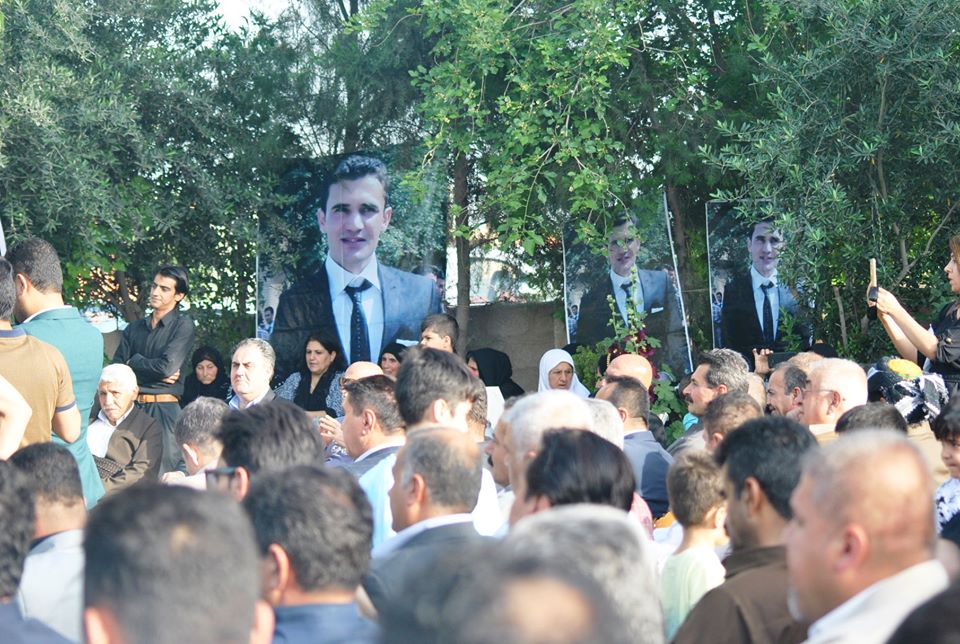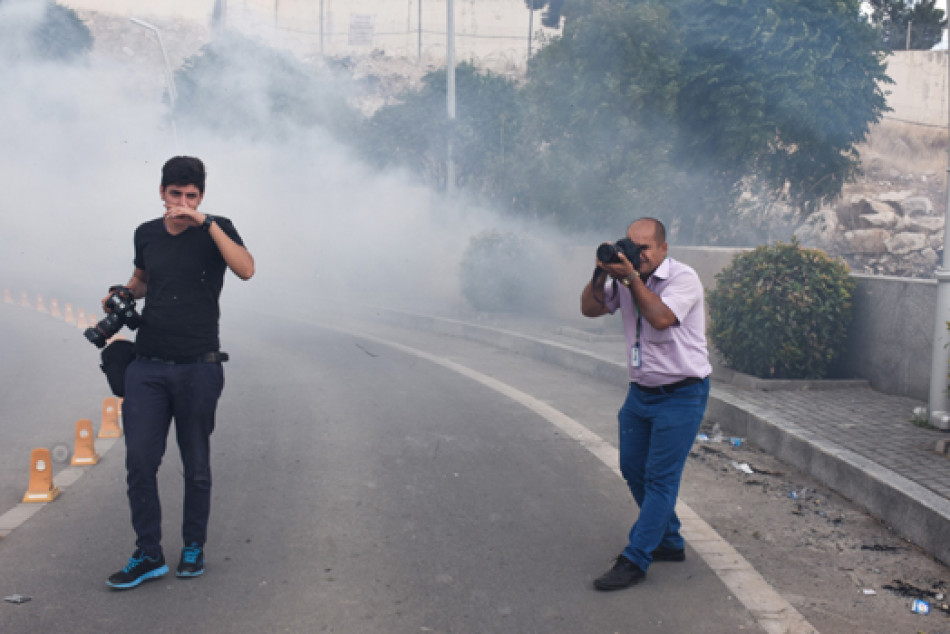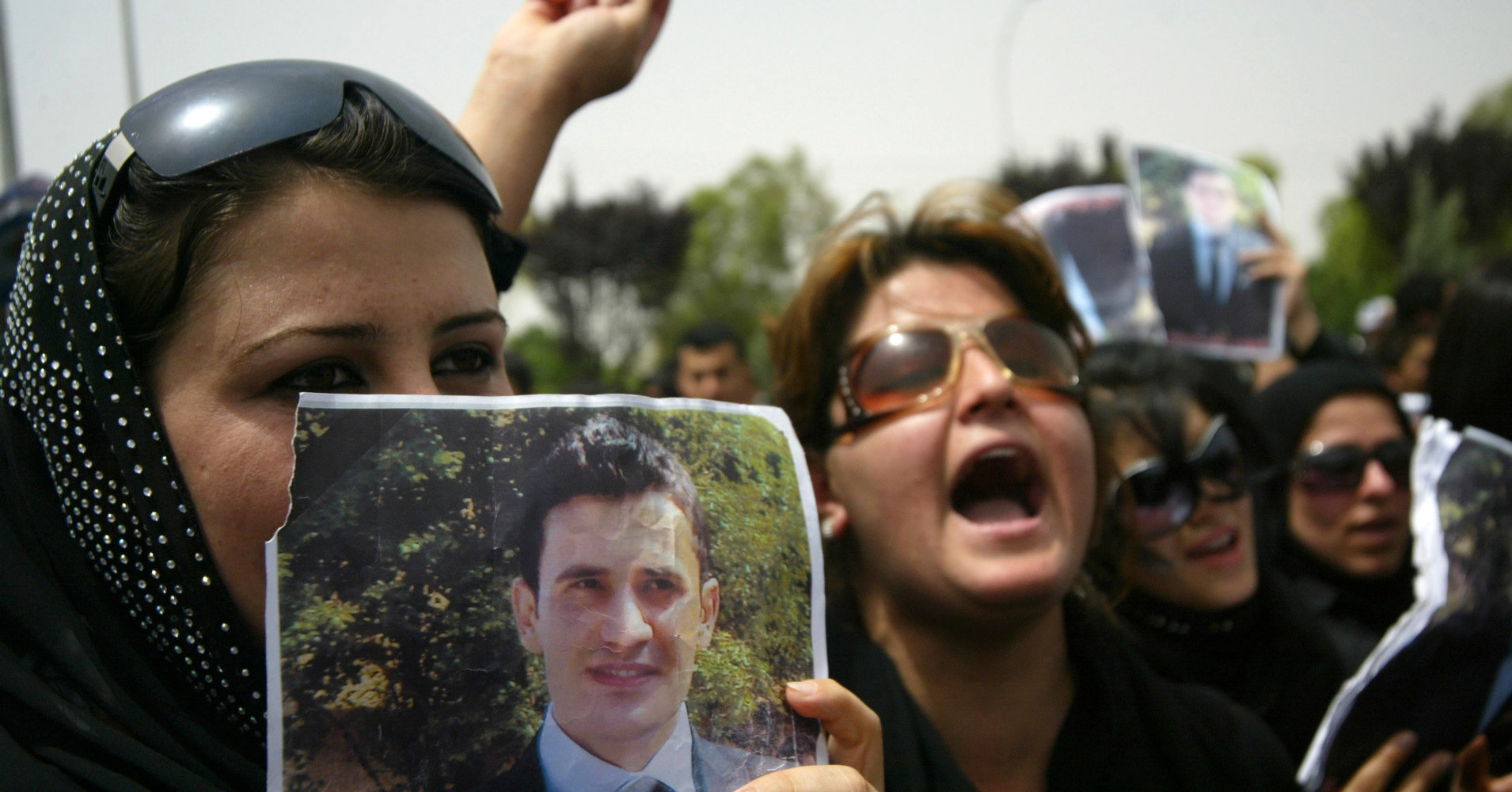“There’s a popular proverb that says, ‘if the perpetrator is not found, the authorities are involved,’” replied journalist Asos Hardi in response to a question about the cold cases of murder, coercion, and persecution of journalists in the Kurdistan Region of Iraq (KRI) and the perpetrators’ evasion of justice.
Hardi is himself a victim of violence. Nine years ago, gunmen raided his office, punched him in the face and pistol-whipped him. He explained that these were same methods used in the cases of Sardasht Osman, Soran Mama Hama, Kawa Garmyani, and dozens of others whose murderers remain unknown and have not faced justice.
The danger is that impunity will motivate more violence against journalists, and it reveals how vulnerable the judicial system in the KRI is.
Sardasht Omsan, a prominent and critical young journalist, was found dead in Mosul ten years ago on May 5th, 2010 after his abduction the day before in front of the College of Literature at Salahaddin University in Erbil where he was a senior student.
Osman was shot in the mouth and his body was dumped on a street in Mosul. His assassination was followed by condemnation from all segments of society in the KRI.

Erbil, people have gathered to commemorate the murder of Osman. Photo: Bashdar Osman Facebook Page (Sardasht Osman’s brother)
One of the last articles Osman wrote was entitled “I am in Love with Barzani’s Daughter”. In it, he discussed injustice and the gap between social classes in the region. He satirically explained how he would find prosperity if he were the president’s son-in-law, adding that he would no longer be forced to live in an impoverished neighborhood.
I am in Love with Barzani’s Daughter
In another article entitled “My Death Knell Rang”, he revealed that he received death threats via phone and text and criticized the Erbil police department for ignoring his requests for protection.
After his assassination, the security forces in Erbil published “confessions” given by several suspects and insisted that “a terrorist group contacted Sardasht Osman and asked him for help multiple times but when he refused to help, they killed him.”
This claim was immediately rejected by Osman’s family, organizations, and activists, who claim that this version of events was a fabrication by the region’s authorities to conceal the identities of the actual perpetrators. An Erbil court then sentenced the suspects to death and closed the case, although it is still unclear if the defendants were in fact executed.
Sardasht Osman Organization issued a statement at the time of the confessions claiming that “such scenario is ridiculous and is an attempt to protect the criminals from punishment for Sardasht Osman’s murder… the investigative committee on the case was also formed to conceal the crime and mislead people.”
Such scenario is ridiculous and is an attempt to protect the criminals from punishment for Sardasht Osman’s murder
Bashdar Osman, on the ten anniversary of his brother’s murder, told KirkukNow, “we are sure that my brother’s murderers are from the highest ranks of power. That is why the judicial system is not able to investigate and punish them.”
“The main reason there is impunity for the murder of journalists and lawlessness is that the authorities themselves, who are superior to all institutions, commit [these crimes]” Bashdar Osman claimed.
According to the United Nations Educational, Scientific and Cultural Organization (UNESCO) data 1,010 journalists from around the world were killed between 2006 to 2017, or one journalist murdered every four days.

Sulaimaniyah, two journalists are taking pictures of teachers and employees protests in the city. Photo: Metrography Center
Another point of concern is that nine out of every ten criminals involved in the murders of journalists, or 90 per cent, have not been prosecuted.
In the Kurdistan Region, 419 cases of violence against journalists were recorded between 2015 to 2020, which includes assassinations, torture, and detentions. According to the Journalists Syndicate, the majority of the perpetrators have not been tried.
Bashdar Osman explains that, “when the perpetrator of a crime is not found, the finger is pointed at the authorities.”
When the perpetrator of a crime is not found, the finger is pointed at the authorities
Sardasht Osman’s family requested that their representative or a representative from an international organization sit on the committee formed by the Kurdistan Regional Government (KRG) to investigate Osman’s murder. However, their request was declined.
“It was the only request we had. When it was declined and when we saw that the court also tried to mislead investigators, we left the court because we knew that the result would be what the authorities wanted,” Bashdar claimed.
Meanwhile, the attack against the prominent Journalist Asos Hardi, head of Awena company, is one of the most well-known cases of violence against journalists in the KRI.
Hardi was brutally attacked in his office on September 29, 2011. Nine years have passed and his case remains open.
The suspects who attacked Hardi are employees of the Ministry of Peshmerga, the KRG, and belong to the Unit 70 Peshmerga force under the Patriotic Union of Kurdistan (PUK). The suspects have yet to face trial.

Sulaimaniyah, Asos Hardi after the attack, September 29, 2011. Photo: Zmnako Ismail
Hardi and his lawyer confirmed that, “some of the violations have been committed by the security forces. Whenever the court summons a suspect, it has to get permission from the Ministry of Interior and the unit’s commander; otherwise, they cannot be called into court. This has become one of the greatest barriers to prosecuting criminals.”
According to Hardi and his lawyer, the court has notified Peshmerga Unit 70 of the summons dozens of times, but there has been no response.
Mustafa Chawrash, the general commander of Unit 70, told KirkukNow, “that incident happened in 2011 and it has nothing to do with me because I took office [as the general commander] just two months ago. Not only am I not aware of the case, I also do not know why there has been no cooperation with the court.”
He expressed his will to cooperate with the court. Chawrash added that if he is ordered to deliver up suspects, “whatever the court orders, I will carry it out it and will cooperate.”
Whatever the court orders, I will carry it out it and will cooperate
Dozens of other cases of journalists’ assassinations, assault and torture remain unresolved in the courts across the Kurdistan Region and the perpetrators have not been found or prosecuted. These cold cases include the murders of journalists Soran Mama Hama, Kawa Garmyani, and Widad Hussein.
“These [cases] create suspicion around [the region’s] authorities because they can solve the biggest terrorism cases and punish [those criminals], so why can’t they not investigate the cases of violence against journalists? Hardi asked.
Dr Karzan Mohammed, an expert in journalism law and a professor at the Department of Media at the University of Sulaimaniyah, explained that by law, any violence against journalists is like violence against civil servants, “but journalists are attacked and the perpetrators are not held accountable. The reason is that the perpetrators either belong to a political party or a tribe, or they have authority and the laws are not enforced against them.
The Kurdistan Syndicate for the Defense of Journalists’ Rights (KSDJR) told KirkukNow that it considers the deepening of political rivalries as a factor in the use of violence against journalists and impunity of the perpetrators. For example, the representative of the Journalists Syndicate quickly withdrew from the committee formed to investigate of the murder of journalist Kawa Garmyany.
Azad Hama Amin, the President of KSDJR, said, “withdrawing from the committee was better because the investigation was mishandled by the Council of Ministers.”
Kawa Garmyani, the editor in chief of Rayal Magazine in Kalar district, Sulaimaniyah, was shot dead in the courtyard of his mother’s house on December 5th, 2013.
Although the alleged assassin was condemned to death, his family rejected the court’s decision and demanded information on identity of the perpetrator, who they claim is a top party and military official.
Karwan Ahamd, Garmyani’s brother, earlier told KirkukNow, “the case is not closed. Sure, someone has confessed, and the court has decided to execute him, but we have to know who is behind the murder.”
We have to know who is behind the murder
“Often, the political interventions have influenced investigations. Generally, the cases involving journalists remain in the investigation stage and the court never makes a final decision,” said Hama Amin
Impunity, as Sardasht Osman’s brother warns, “will encourage other people to commit such crimes.”
“If the murderers of Sorani Mama Hama had been prosecuted, Sardasht Osman would not have been assassinated. And if the killers of Sardasht Osman had been prosecuted, Widad Hassan would not have been killed. Thus, there remains the possibility that more journalists will be killed.”
UNESCO also warns that the impunity encourages more violence against journalists, and it is a sign of “a deepening of conflict, and weakness of the rule of law and the judicial system.”





